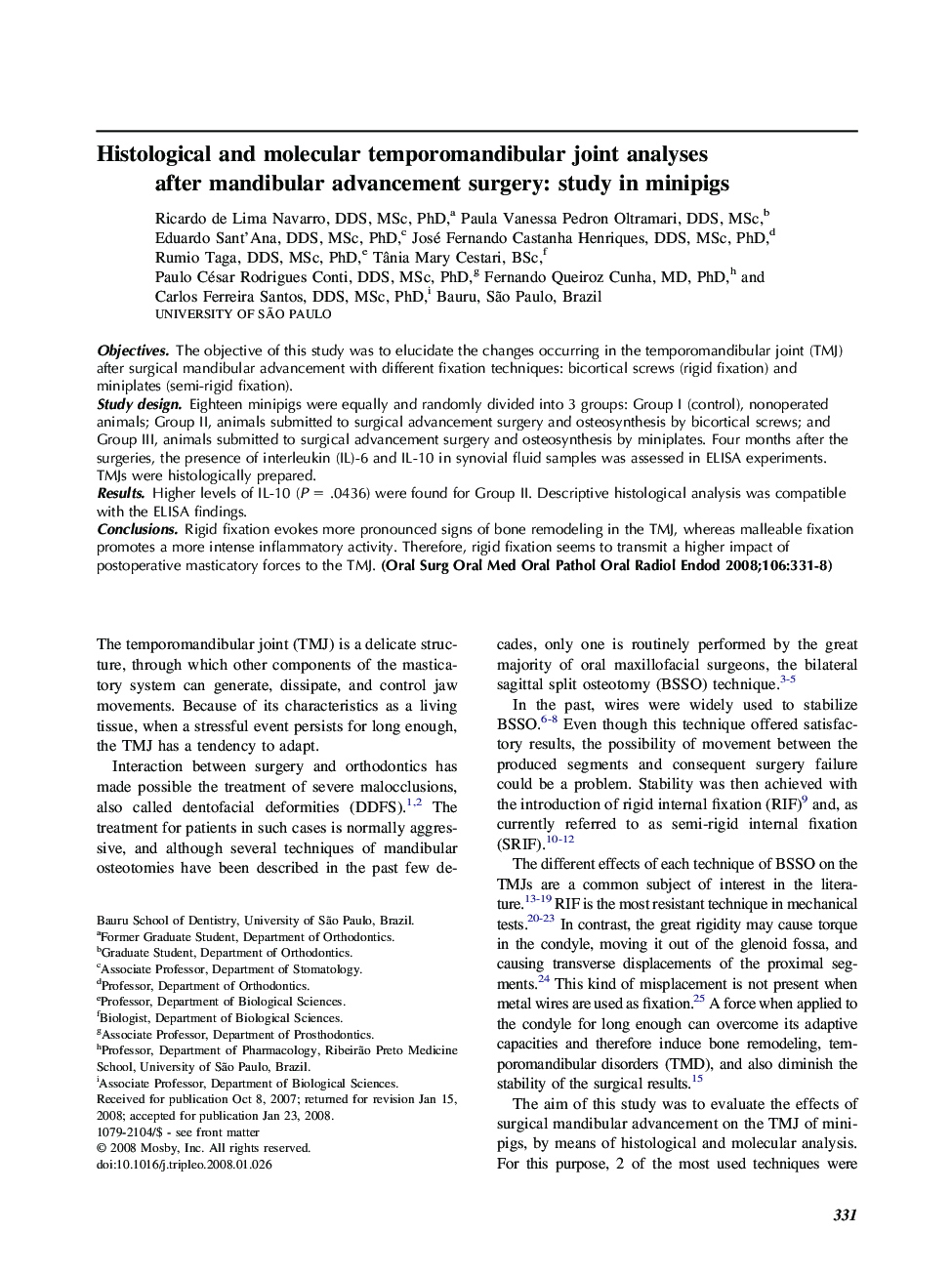| Article ID | Journal | Published Year | Pages | File Type |
|---|---|---|---|---|
| 3168495 | Oral Surgery, Oral Medicine, Oral Pathology, Oral Radiology, and Endodontology | 2008 | 8 Pages |
ObjectivesThe objective of this study was to elucidate the changes occurring in the temporomandibular joint (TMJ) after surgical mandibular advancement with different fixation techniques: bicortical screws (rigid fixation) and miniplates (semi-rigid fixation).Study designEighteen minipigs were equally and randomly divided into 3 groups: Group I (control), nonoperated animals; Group II, animals submitted to surgical advancement surgery and osteosynthesis by bicortical screws; and Group III, animals submitted to surgical advancement surgery and osteosynthesis by miniplates. Four months after the surgeries, the presence of interleukin (IL)-6 and IL-10 in synovial fluid samples was assessed in ELISA experiments. TMJs were histologically prepared.ResultsHigher levels of IL-10 (P = .0436) were found for Group II. Descriptive histological analysis was compatible with the ELISA findings.ConclusionsRigid fixation evokes more pronounced signs of bone remodeling in the TMJ, whereas malleable fixation promotes a more intense inflammatory activity. Therefore, rigid fixation seems to transmit a higher impact of postoperative masticatory forces to the TMJ.
